As the popularity of waxed amaryllis continues to grow, so does the curiosity surrounding these captivating plants. From their unique growing process to their minimal maintenance requirements, there’s no shortage of questions when it comes to caring for waxed amaryllis.
In this blog post, we’ve gathered some of the most common queries from plant enthusiasts and sought out expert answers to provide you with the information you need to keep your waxed amaryllis thriving. Whether you’re a seasoned gardener or new to the world of indoor plants, this Q&A session will address your burning questions and help you cultivate beautiful blooms with confidence.
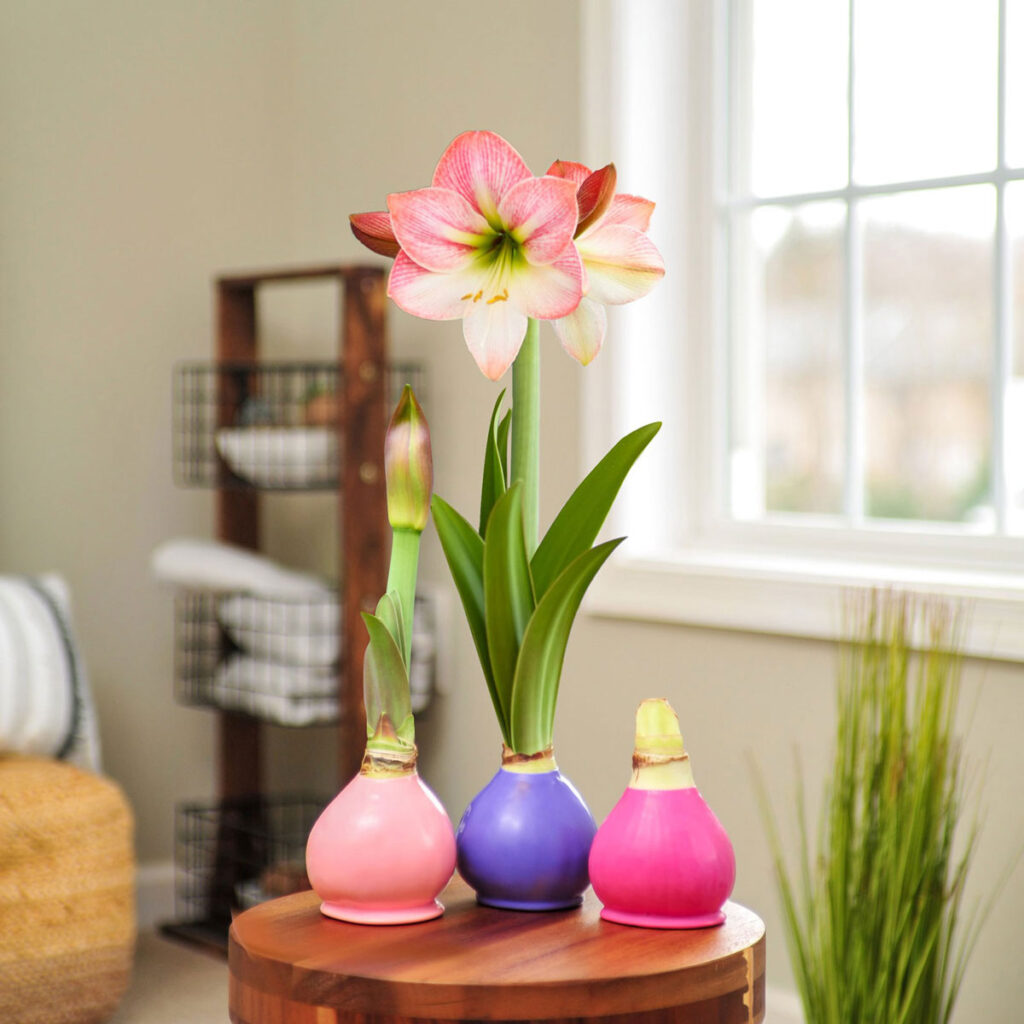
Q: I received my waxed Amaryllis, but there is no growth!
A: We carefully ship our amaryllis bulbs with minimal height to ensure their safety during transportation. Your Amaryllis bulb is a living beauty that follows its own timeline. Don’t be surprised if it takes anywhere from 4 to 12 weeks to wake up and start its growing journey. The exact timing depends on the variety of Amaryllis and the unique conditions in its environment. Some bulbs may sprout earlier, while others might take a few additional weeks to show growth.

We kindly ask you to embrace the anticipation, and soon enough, you’ll witness the magical transformation of your Amaryllis into a stunning bloom.
Q: My waxed Amaryllis bulb has dents in it! Is it healthy?
A: Absolutely! Bloomaker® is constantly striving to enhance our commitment to sustainability and environmental stewardship. As part of this ongoing effort, we have decided to eliminate the use of plastic covers for our waxed Amaryllis bulbs.
While plastic covers provided a uniform appearance, they also contributed to environmental waste. By discontinuing their use, we are taking a significant step towards reducing plastic pollution and promoting a healthier planet.
Without the plastic covers, our waxed bulbs will now present a more natural look, showcasing their unique characteristics and perfect imperfections. Each bulb will be just as nature intended – beautifully individual.

We believe this change will not only benefit the environment but also allow you to enjoy the authentic beauty of our waxed Amaryllis bulbs. The wax will continue to protect and nourish the bulb, ensuring it blooms magnificently, while giving it a more genuine and organic appearance.
We are excited to offer you an eco-friendlier product that remains as stunning and vibrant as ever and we thank you for your understanding and support as we make this transition.
Q: How often should I water my waxed amaryllis?
A: One of the key benefits of waxed amaryllis is their low-maintenance nature, as they do not require watering. The protective wax coating seals in moisture, eliminating the need for traditional watering.
Simply place your waxed amaryllis bulb in a bright location and enjoy the stunning blooms as they emerge and develop.
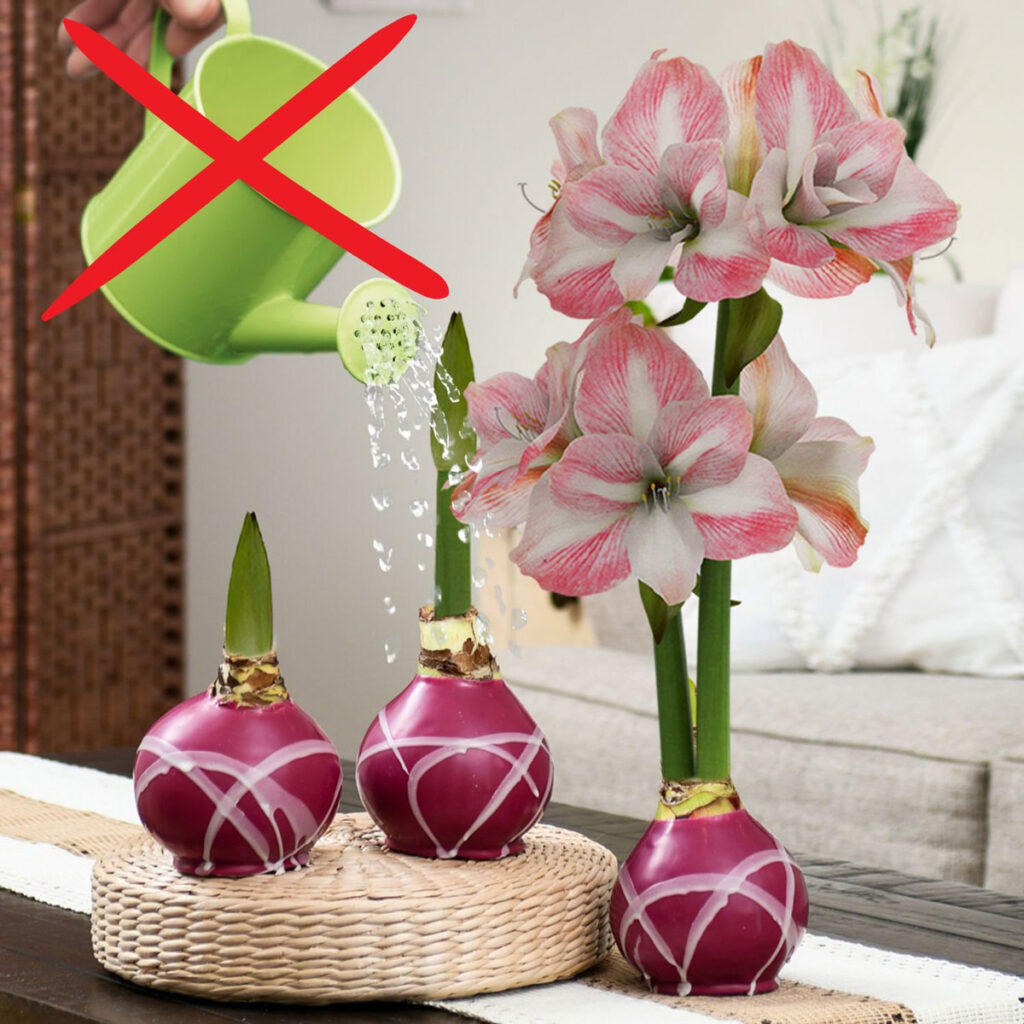
Q: How can I extend the lifespan of my waxed amaryllis?
A: Trim the wilted flowers. We always recommend to wait until the flowers completely fade and the flower stalk yellows before trimming it off the plant. Trim it off about an inch above the bulb, being sure not to cut into the foliage.
Keep the leaves on the plant. Through photosynthesis, the leaves will work to recharge the bulb. The plant needs the energy stored in the bulb to produce a new flower next year. If you cut off the leaves, you’re weakening your plant.
By following the steps below, you can quickly and easily prune spent blooms from your amaryllis plant, promoting continued growth and encouraging new blooms to emerge:
1. Identify Spent Blooms
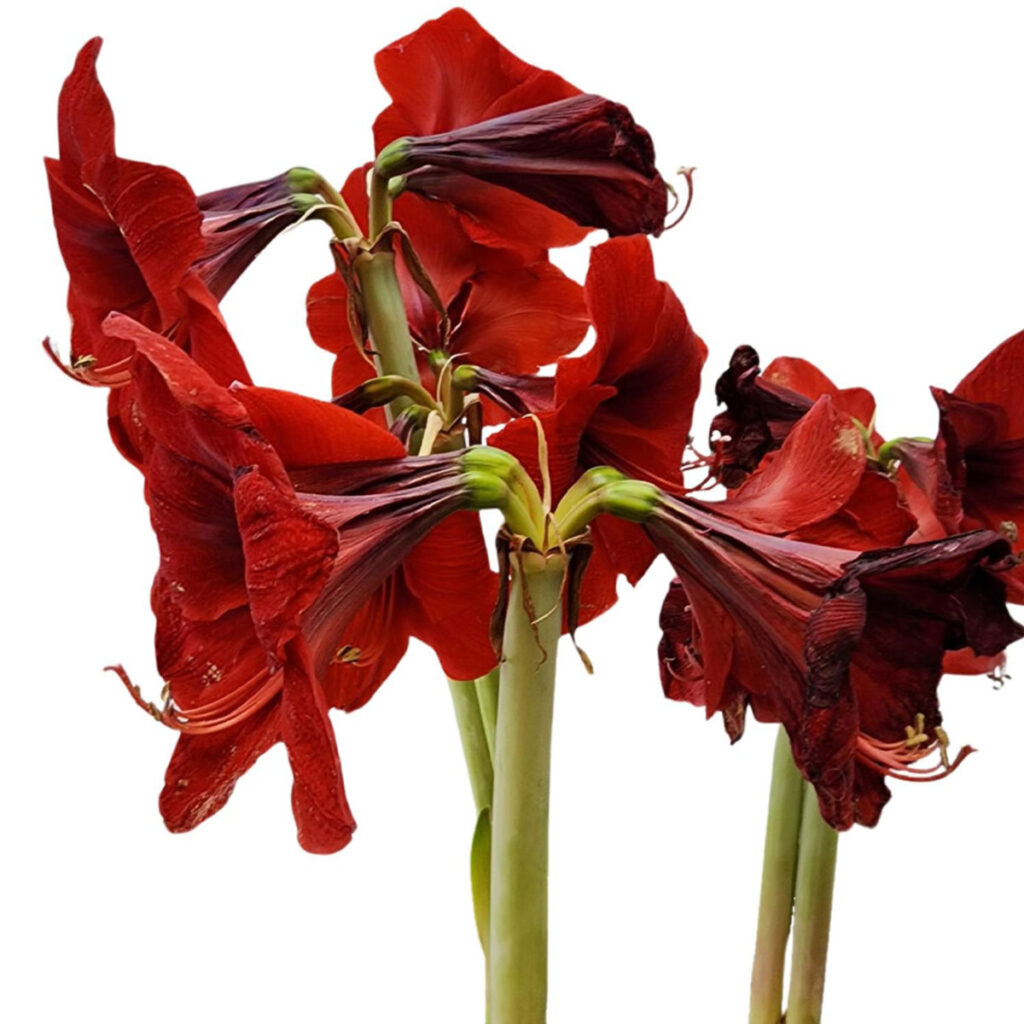
2. Gently Grasp the Stem
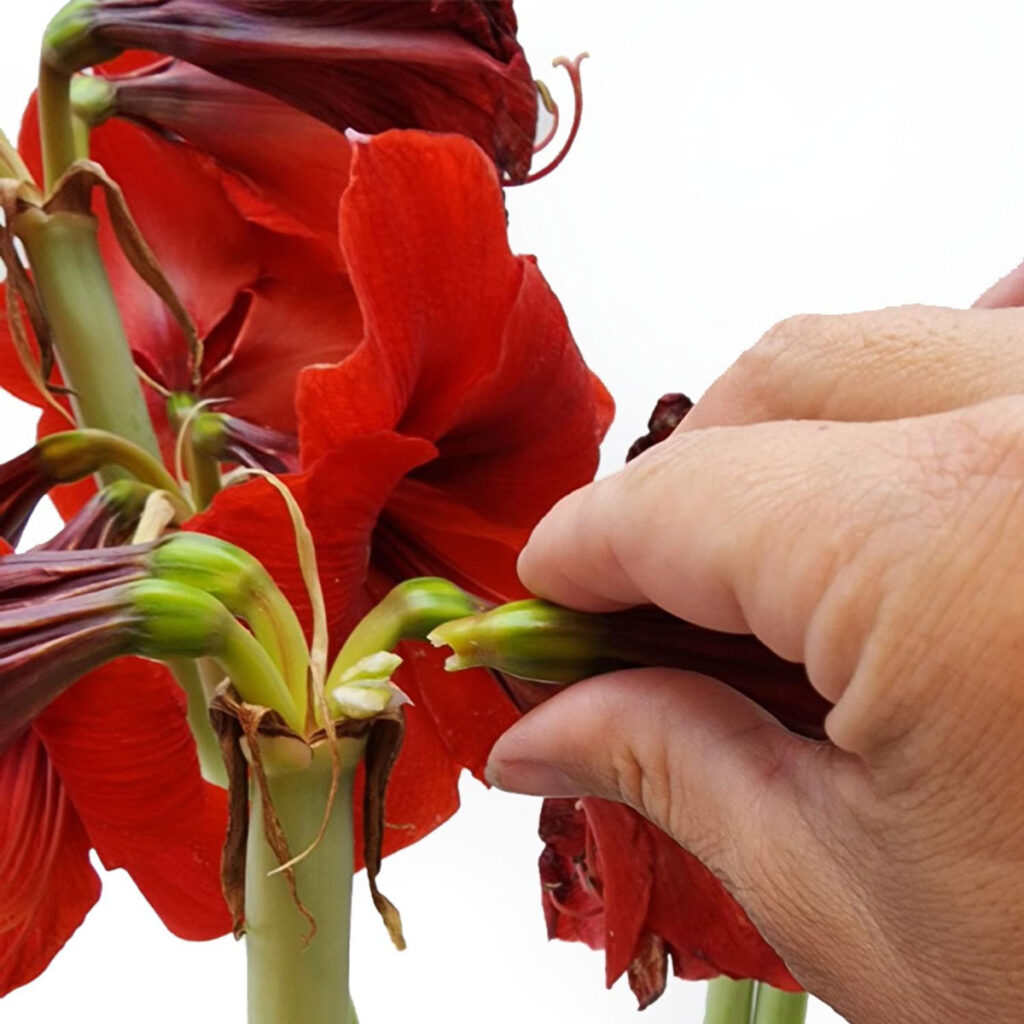
3. Apply Light Pressure
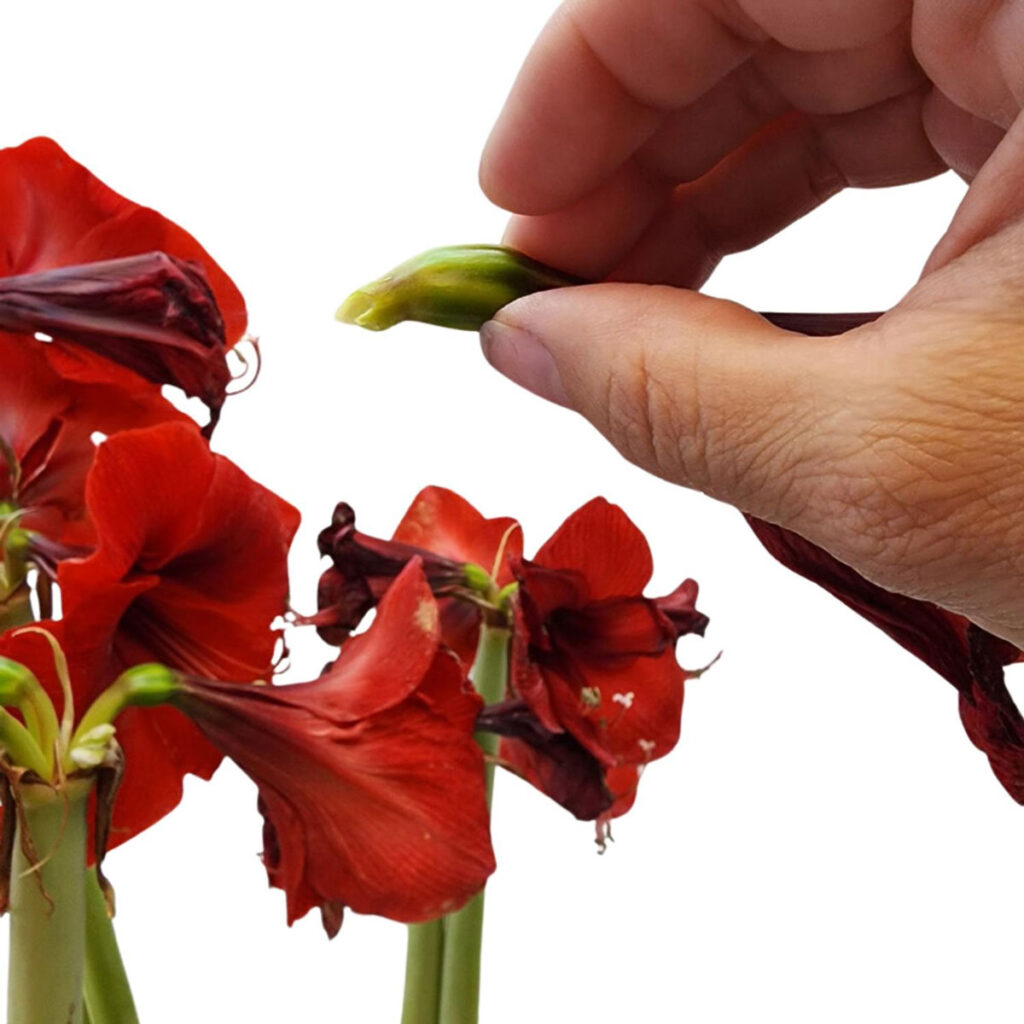
4. Dispose of the Bloom

Q: Can I remove the wax coating from my Amaryllis bulb before blooming?
A: While it is possible to remove the wax coating from your amaryllis bulb, it is not recommended to remove or extract the bulb from the wax before the Amaryllis has showed you it’s beautiful blooms. The wax acts as a protective layer, sealing in moisture and nutrients essential for the bulb’s health. Removing the wax entirely could harm the bulb and affect its ability to bloom for the first time successfully.
However, you can trim or remove the loose bits to tidy up the appearance.
Q: How long will my Bloomaker® waxed Amaryllis bloom?
A: The blooming period of waxed amaryllis can vary depending on factors such as temperature, light exposure, and overall care.
On average, it can take around 8 to 12 weeks before the amaryllis shows blooms, though some may bloom quicker, while others may take their time. Once in bloom, you can expect your waxed amaryllis to continue flowering for several weeks, providing you with an extended period of vibrant color and beauty to enjoy.
So, while the wait for blooms may require some patience, the rewards are well worth it. With proper care and attention, your waxed amaryllis will grace your home with its exquisite blooms, adding a touch of elegance and charm to any space.
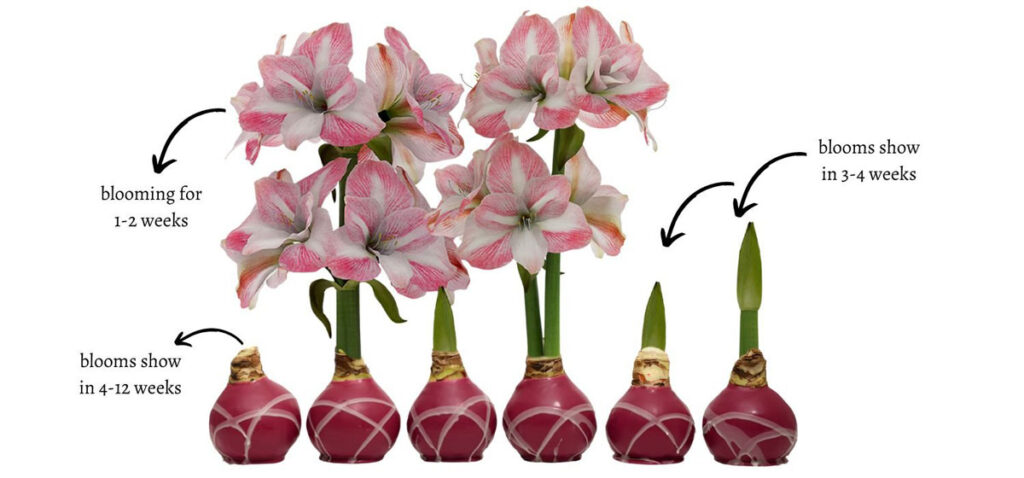
Q: Will my plant still grow and bloom if the wax on the bulb is cracked?
A: If you notice small cracks in the wax of your waxed amaryllis bulbs, we want to assure you that these cracks are purely cosmetic and should not hinder the growth or blooming of your bulbs in any way. So please, rest assured, our amaryllis bulbs are resilient and will continue to flourish despite these minor imperfections.
If you’re looking to enhance the visual appeal of your display, we suggest placing the waxed bulbs in a decorative pot or container. This can add an extra touch of charm to your indoor garden! It’s important to note that, regardless of the cracks in the wax, our waxed amaryllis bulbs do not require watering.
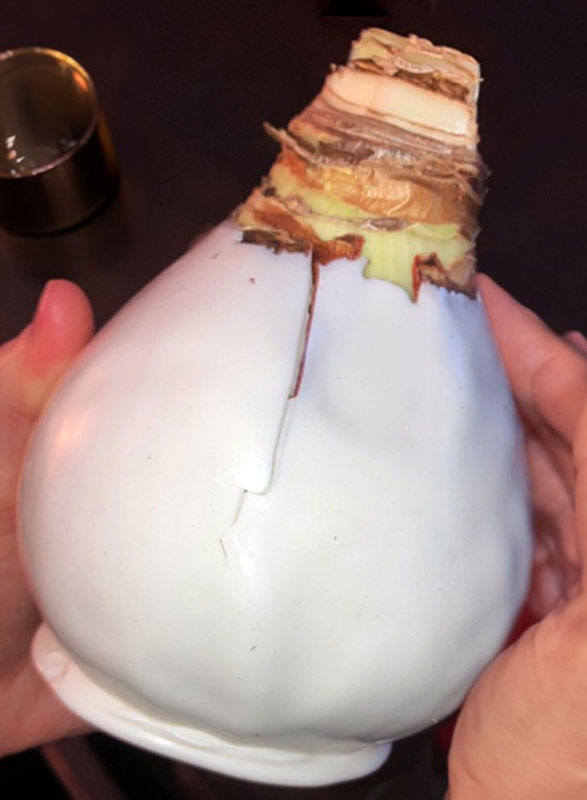
Q: Why are the tips of the buds and leafs brown-ish?
A: The tips of amaryllis bulbs can turn brown primarily due to natural aging or handling during storage and shipping. This browning of the tips is not uncommon and is generally a cosmetic issue. However, it’s essential to note that when (waxed) amaryllis bulbs start to grow, new healthy foliage and stems typically emerge, and this growth usually replaces the brown tips.

As the (waxed) amaryllis bulb begins its growth cycle, the old, brown tips are gradually pushed aside, and new, green growth takes over. It’s a sign that the bulb is actively growing and transitioning into its blooming phase. So, while brown tips might be initially noticeable, they are often temporary and give way to the vibrant and healthy greenery characteristic of amaryllis blooms.
Q: Can I reuse my Bloomaker® waxed Amaryllis bulb after it has finished blooming?
A: You can choose to pot the bulb once it has finished blooming and the leaves begin to yellow and wither. At this point, you can gently remove the bulb from the wax. However, if you’re considering this option, we’ve added a helpful video demonstrating how to extract the bulb from the wax. Feel free to watch it if you’re interested in trying this method.

Q: How can I encourage my waxed Amaryllis to rebloom?
A: To encourage your waxed amaryllis to rebloom once the wax has been rempved, it’s important to provide it with the right growing conditions and care. After the blooming period, remove any spent flowers and trim back any dead foliage. Place the bulb in a cool, dark location and allow it to rest for several months. When new growth begins to emerge, gradually reintroduce the bulb to light and resume regular watering to support its growth.
Please be aware that there is no need to water the amaryllis bulb while it is still coated in wax.
Thank you for visiting Bloomaker’s Waxed Amaryllis Care Q&A blog! We hope you found the tips and insights helpful in caring for your waxed Amaryllis bulbs.
Ready to get your hands on these stunning plants?
Visit our webshop at shop.bloomaker.com to explore our wide selection of waxed amaryllis bulbs. With our expert guidance from the blog, we’re confident you’ll enjoy your waxed amaryllis bulbs to the fullest.
Experience the beauty and elegance of these unique plants firsthand. Shop now and bring a touch of natural splendor into your home with Bloomaker’s waxed amaryllis bulbs.
